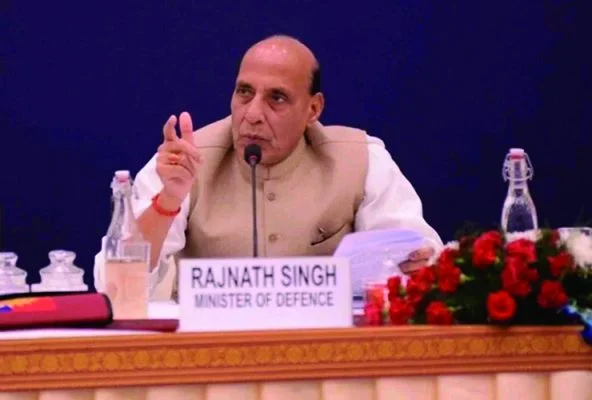New Delhi: With Western and Northern borders continuing to face threats, the Defence Ministry chalked out a framework to foster jointness and help in maintaining the highest level of military preparedness through expeditious decision making.
The framework which was unveiled on September 14 is a new framework to streamline, simplify and rationalise the revenue procurement process for the armed forces with an overall focus on making available required resources without any delays.
“It will foster jointness among the three services and help in maintaining the highest level of military preparedness through expeditious decision making,” a statement said.
The Defence Procurement Manual (DPM) 2025 lays down the guiding principles and provisions for all revenue procurements in the defence ministry valuing around Rs 1 lakh crore for the current fiscal, an official readout said.
The DPM will “ensure timely availability of requisite resources to the armed forces and at appropriate cost”, the defence ministry said in the readout.
The new framework was released after it was approved by Defence Minister Rajnath Singh.
“Defence Minister Rajnath Singh has approved the DPM 2025 to further streamline, simplify, enable and rationalise the revenue procurement process in the Ministry of Defence and cater to the emerging requirements of the armed forces in the era of modern warfare,” the ministry said.
It said the new manual is aimed at achieving self-reliance in fulfilling the needs of the armed forces under the revenue head (operations and sustenance segment).
Procurement of goods and services by the defence services and of other organisations under the defence ministry is regulated by the DPM. It was last promulgated in 2009.
The new manual was under revision in the ministry in consultation with the armed forces and other stakeholders.
“Ease of doing business has been further strengthened in the document, which aims to boost Aatmanirbharta (self-reliance) in defence manufacturing and technology,” the ministry said.
“There has been a pressing need for this manual to be aligned with latest developments in the field of public procurement duly ensuring the use of technology in procurement with utmost fairness, transparency, and accountability,” it said.
The revised document has been aligned with the updated provisions of the manual for procurement of goods issued by the finance ministry.
“As a major thrust to Aatmanirbhar Bharat, a new chapter has been included to promote self-reliance through innovation and indigenisation,” the defence ministry said.
“This will help in the indigenisation of defence items/spares through in-house designing and development in collaboration with public/private industries and academia,” it noted.
The concerns of the individuals and industry who want to venture into this sector has been addressed by relaxing many provisions of development contracts.
“Provision has been introduced not to levy Liquidity Damages (LD) during the development phase,” the ministry said.
As part of this incentive to encourage self reliance in defence manufacturer, Minimum LD of 0.1 per cent will be levied post development of any prototype while the maximum LD has been lowered to 5 per cent, and in case of inordinate delays only, maximum LD will be 10 per cent, it said. This will result in incentivising those suppliers who genuinely try to meet the deadline but make the supplies with little delay, it added.
In addition, a provision has been made to provide assured guarantee of orders in terms of quantity.
The revised document will empower the competent financial authorities at field level/lower formations, expedite decision making, avoid movement of files between lower to higher levels and ensure timely payment to the suppliers, the ministry said.
In a landmark move, the Ministry of Defence has restructured its revenue procurement rules to provide significant relief to defence companies struggling with R&D delays. Companies engaged in prototype development for the armed forces will no longer face fines or liquidated damages during the research stage, easing pressure on private and public manufacturers investing in indigenous technologies.
One of the most critical reforms is the assurance of orders for companies for at least five years. This provision guarantees stability and visibility for production pipelines. Under certain circumstances, the guarantee period may be extended to as long as 10 years, giving industry stakeholders long-term confidence to invest in production capacities.
The rules are particularly significant given that revenue procurement—covering ammunition, spares, and stores—accounts for nearly ₹1 lakh crore annually. The new manual simplifies and streamlines procurement procedures, ensuring alignment with modern practices in public procurement and addressing long-pending concerns of both the armed forces and domestic defence firms.
The revised manual marks the first major overhaul since 2009, carried out under Defence Minister Rajnath Singh’s “year of reforms” initiative. The changes specifically benefit the private sector, which often struggled to meet stringent prototype development timelines due to supply chain constraints and evolving user requirements.
In parallel, a separate process is underway to revamp the Defence Acquisition Procedure (DAP) governing capital purchases. An expert panel is expected to submit its final recommendations by December, pointing to an integrated reform package that will reshape both revenue and capital procurement structures in the coming months.
– The writer is a senior journalist and media consultant. The views expressed are of the writer and do not necessarily reflect the views of Raksha Anirveda.






